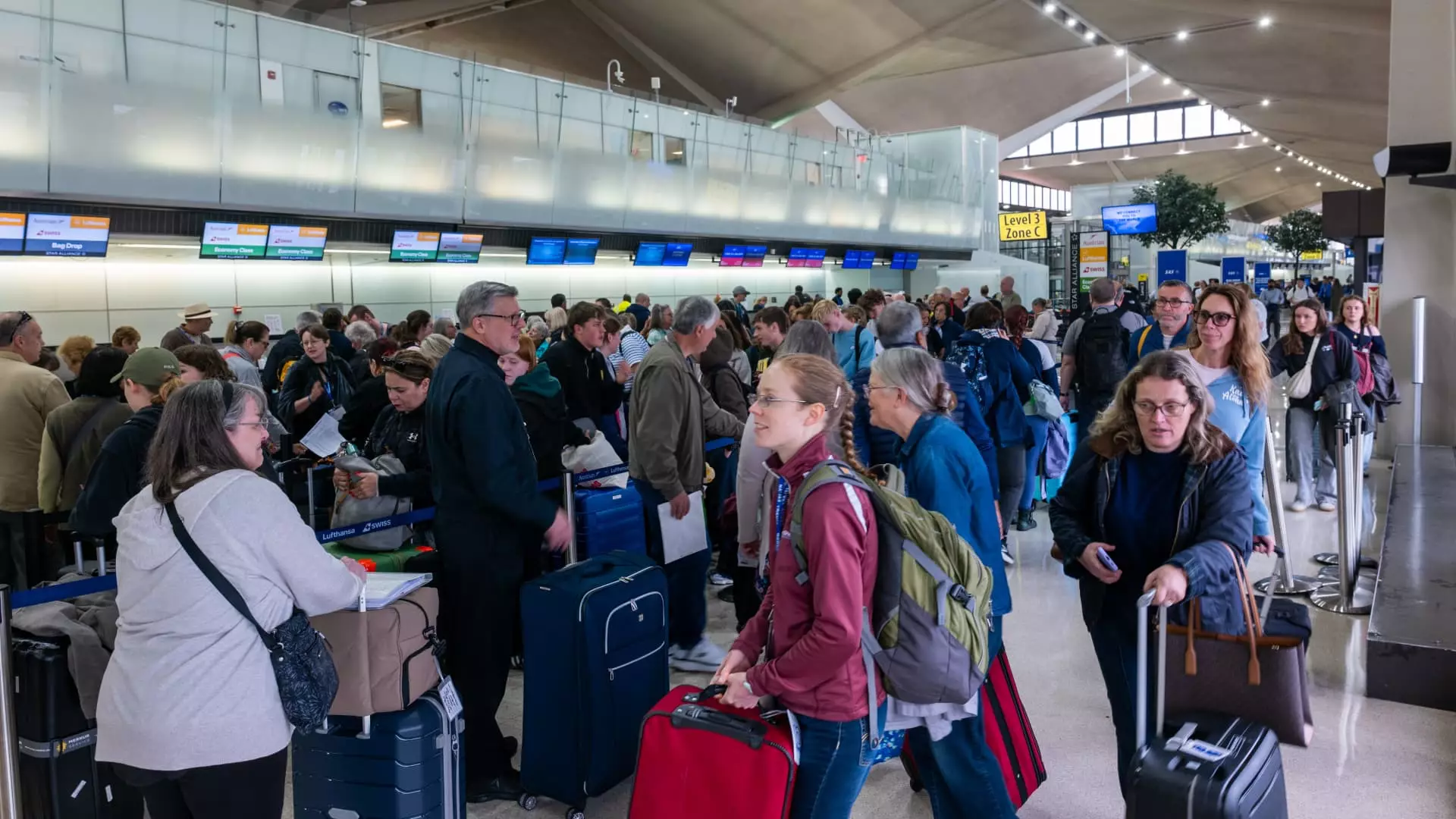Last week’s brief yet catastrophic loss of communication between air traffic controllers and aircraft at Newark Liberty International Airport revealed a disturbing reality: U.S. aviation is teetering on the edge of dysfunction. The National Air Traffic Controllers Association reported a 90-second blackout where controllers could neither see nor contact incoming and outgoing flights. This incident, while seemingly brief, had severe ramifications, causing over 1,500 flight delays and accentuating existing concerns about an aging aviation infrastructure and chronic staffing shortages. The ramifications are not just logistical; they reflect a systemic failure that demands urgent attention.
Staffing Shortages: A Crisis Made Worse
The air traffic control sector has long been beleaguered by staffing shortages, a problem exacerbated by high-pressure work environments and insufficient support systems. The Federal Aviation Administration (FAA) revealed that, following the Newark incident, several controllers required time off due to stress. The reality has become painfully clear: the U.S. cannot maintain a functional air traffic control system without adequate staffing. United Airlines CEO Scott Kirby bluntly pointed out that almost 20% of Newark controllers had walked off their posts amid the chaos, further complicating flight logistics in the New York area. This portrayal raises an essential question: when will we finally prioritize the well-being of our air traffic controllers over bureaucratic inefficiencies?
Ageing Infrastructure: An Obstacle to Safety
The FAA expressed the urgency of upgrading the current technology used within the air traffic control framework. Yet, talk is cheap without action. U.S. Transportation Secretary Sean Duffy’s visit to a Philadelphia facility highlighted the critical need for a complete overhaul of our air traffic systems—but will those words lead to tangible changes? The technology currently used for managing one of the world’s most congested airspaces can no longer cope with the demands of modern aviation. Duffy stated that despite the system being “effective,” it lacks the sophistication required for the current volume of air traffic. If complacency persists, the next crisis may not be as easily recovered from as a 90-second outage.
Investment without Action: A Disconnect
The Port Authority of New York and New Jersey invested billions into modernizing Newark Liberty Airport. However, these efforts are futile without a supportive federal air traffic control system that is fully staffed and equipped with modern technology. It is a classic example of throwing money at a problem without addressing the foundational issues at play. What good is a state-of-the-art airport if it operates under a flawed and strained air traffic control system? Immediate action is needed to attract and retain skilled controllers who are essential for managing this vital network.
The Role of Governance: Addressing Callous Ineptitudes
Political leaders like New Jersey Governor Phil Murphy are starting to sound alarms over ongoing staffing shortages and the deteriorating state of air traffic control systems. His call for prioritizing investments in the region comes at a crucial juncture, especially with upcoming events like the World Cup Finals expected to bring millions of additional passengers. The cost of inaction is high—not just in terms of financial losses due to flight cancellations but also in the very fabric of public trust in our transportation systems. Will the bureaucracies rally to address these issues in time, or will the cycles of neglect continue?
A Call for Comprehensive Reform
To tackle these intertwined issues, we require a holistic strategy that intertwines workforce management with technological advancements. The advent of modern tools and strategies—such as automation and artificial intelligence—could bear significant potential for alleviating current pressures on air traffic control systems. However, implementing these solutions demands a cultural shift within the FAA, one that recognizes the urgent necessity for reform and adaptation. This is not an insurmountable obstacle; it simply requires the political will to act and a commitment to investing in people—those who guide our skyways daily.
In the end, if we stick our heads in the sand and ignore these glaring problems, we risk making headlines for all the wrong reasons. Advocating for comprehensive reforms is not merely a matter of efficiency; it is a matter of public safety and accountability. In a time when the stakes are exceedingly high, we must navigate through bureaucracy and challenge the status quo to build a better aviation future.

